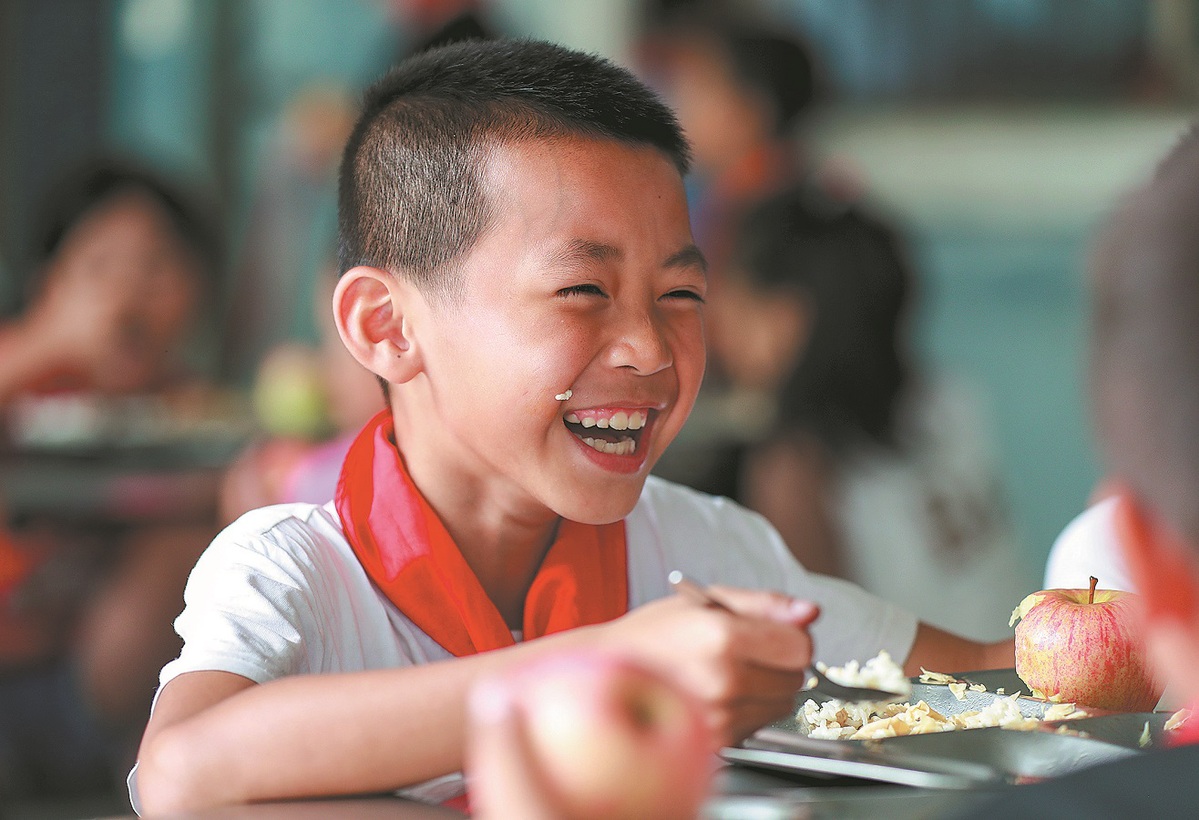

Seasonal local produce
Nestled in the mountains, a long, narrow path leads to the entrance to Shaping village kindergarten. Beside it, a garden thrives with rows of corn, peanuts, peppers, and long beans, interspersed with peach, pear, and pomelo trees. Near the school gate, a fenced area holds chickens and ducks, leisurely pecking at the ground.
Pass the gate, a large poster on a wall immediately catches the eye. It details the principles of balanced meals, encourages healthy eating habits, and offers tips to prevent picky eating for preschool children.
It is noon, and the children are lined up outside the kitchen, waiting for their lunch. A small blackboard hangs by the kitchen window, listing today's menu: chicken stewed with mushrooms, pork ribs stewed with corn, scrambled eggs with tomatoes, and stir-fried cabbage with carrots.
"Back then, we didn't really get nutrition; we just made sure they weren't hungry," said Peng. "Now, we change the menu daily and ensure it is nutritionally balanced."
The menu is carefully crafted by experts from the Normal College of Jishou University in Xiangxi. Lunch typically includes at least one meat dish, one vegetable dish, and soup. The afternoon snack is usually milk or an egg, paired with a small piece of potato, sweet potato, or corn.
Each of the 40 participating kindergartens must use at least 25 different ingredients in their weekly meals, and the quantity is precisely measured in grams. Changed monthly, the menu prioritizes seasonal, locally sourced ingredients for fresh and nutritious meals.
Tian Hong, associate dean of the college and lead writer of the preschoolers' nutrition improvement report, said the children's daily intake of trace elements such as calcium, iron, and zinc, as well as vitamins, generally fell below national standards in the past.
"Children aged 3 to 5 grow fast," Tian said. "Poor nutrition can hinder their growth, affect their learning, and raise their risk of chronic diseases later on."